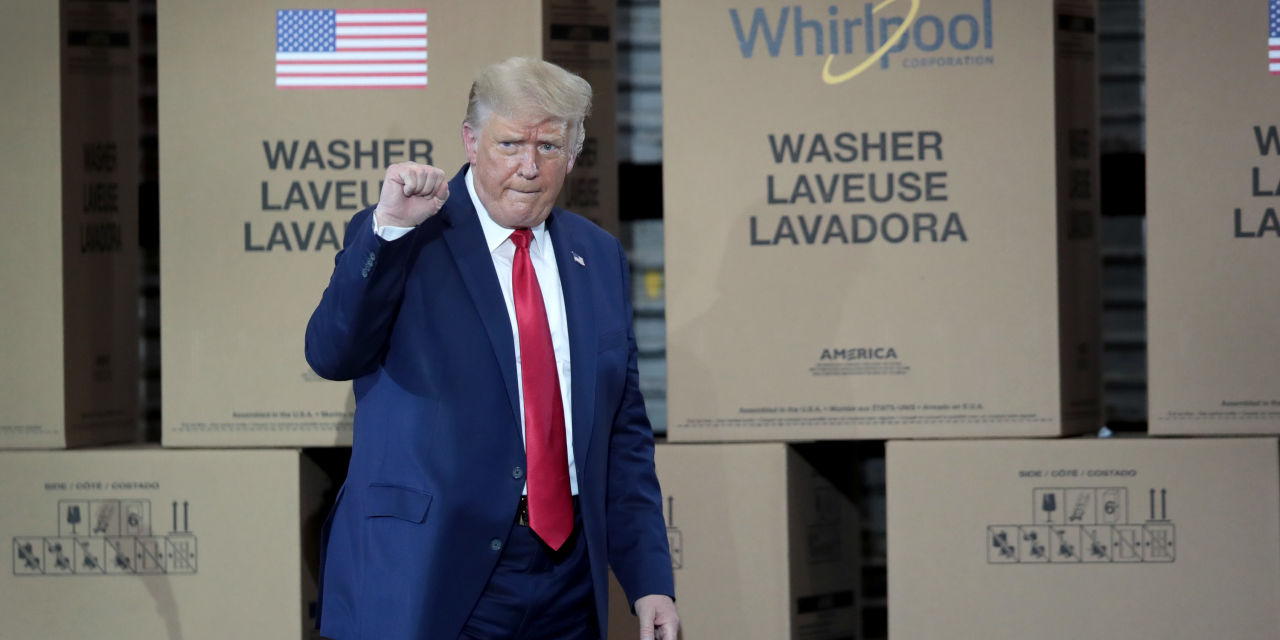China's EV Domination: A Look At America's Readiness

Table of Contents
China's EV Market Leadership: A Deep Dive
China's dominance in the EV market isn't accidental; it's the result of a multi-pronged strategy focused on production, policy, and technological innovation.
Massive Production Capacity and Economies of Scale
China boasts massive EV production capabilities, dwarfing those of many other nations. This is fueled by a robust and extensive supply chain, allowing for economies of scale that significantly reduce production costs. Leading Chinese EV manufacturers like BYD, NIO, and Xpeng have captured substantial market share, benefiting from this cost-effective production.
- Gigafactories: China has numerous large-scale battery factories ("gigafactories"), securing a significant portion of the global battery supply.
- Vertical Integration: Many Chinese EV manufacturers have integrated their supply chains vertically, controlling various stages of production from raw materials to finished vehicles.
- Lower Labor Costs: Compared to many Western nations, China's lower labor costs contribute to the overall cost competitiveness of its EVs.
Government Support and Subsidies
The Chinese government has actively championed EV adoption through substantial subsidies and incentives for both manufacturers and consumers. This includes generous financial support for R&D, tax breaks, and extensive investment in charging infrastructure.
- Subsidy Programs: Direct subsidies for EV purchases have driven consumer demand and stimulated the market.
- Infrastructure Development: Massive investments in charging stations across the country have addressed range anxiety, a major barrier to EV adoption.
- Favorable Regulations: Policies prioritizing domestic EV manufacturers have created a protective environment for their growth.
Technological Innovation and Battery Technology
China has made significant strides in battery technology, a crucial aspect of EV competitiveness. This includes advancements in battery density, charging speeds, and the development of innovative battery chemistries.
- Battery Density: Chinese manufacturers are pushing the boundaries of battery energy density, leading to longer driving ranges on a single charge.
- Fast-Charging Technology: Innovations in fast-charging technology are reducing the time required to replenish EV batteries.
- Research & Development: Significant investments in research and development have propelled China to the forefront of battery technology innovation.
The Current State of the US EV Market
While the US EV market is growing, it faces significant challenges in catching up with China's rapid progress.
Challenges Faced by American Automakers
American EV manufacturers face hurdles including supply chain bottlenecks, higher production costs compared to their Chinese counterparts, and persistent consumer hesitation due to concerns about range, charging infrastructure, and price.
- Supply Chain Issues: Securing reliable supplies of key components, especially batteries, remains a challenge.
- Higher Production Costs: Labor costs and other manufacturing expenses in the US are significantly higher than in China.
- Consumer Perception: Overcoming consumer concerns about range anxiety, charging availability, and the perceived higher initial cost of EVs is crucial.
Government Initiatives and Policy Support
The US government has introduced several initiatives to bolster domestic EV production and adoption, including tax credits, infrastructure investments under the Bipartisan Infrastructure Law, and regulatory changes. However, the scale and consistency of these efforts lag behind China's comprehensive approach.
- Tax Credits: Federal tax credits incentivize EV purchases, but their effectiveness is debated due to eligibility criteria and fluctuating policy.
- Infrastructure Investments: The Bipartisan Infrastructure Law allocates funding for EV charging infrastructure, but deployment faces challenges.
- Regulatory Framework: Environmental regulations are driving the transition to EVs, but more supportive policies for domestic manufacturing are needed.
Consumer Demand and Adoption Rates
Consumer demand for EVs in the US is increasing, but adoption rates are still lower compared to China. Factors such as price, range anxiety, and the availability of charging infrastructure all influence consumer decisions.
- Price Sensitivity: The higher initial cost of EVs compared to gasoline-powered vehicles remains a significant barrier for many consumers.
- Range Anxiety: Concerns about running out of battery power before reaching a charging station are still widespread.
- Charging Infrastructure: While expanding, the availability of public charging stations is still insufficient in many areas.
Bridging the Gap: How America Can Compete
To effectively compete with China's EV dominance, the US needs a multifaceted approach.
Investing in Domestic Manufacturing and Supply Chains
Building a robust and resilient domestic supply chain for EV components and batteries is paramount. This requires strategic investments to attract manufacturing, enhance domestic production capabilities, and reduce reliance on foreign sources.
- Reshoring Initiatives: Incentivizing the return of manufacturing to the US is crucial to strengthen the domestic supply chain.
- Battery Production: Investing heavily in domestic battery production capacity is essential to reduce reliance on foreign suppliers.
- Critical Minerals: Securing access to critical minerals used in EV batteries is another important aspect of supply chain resilience.
Accelerating Technological Innovation
Increased investment in research and development is vital for maintaining competitiveness in battery technology, charging technology, and other key areas. Collaboration between industry and academia is key to driving innovation.
- Battery Technology R&D: Focusing on next-generation battery technologies, such as solid-state batteries, is crucial.
- Charging Technology Advancements: Developing faster and more efficient charging technologies is also essential.
- Industry-Academia Partnerships: Fostering collaboration between research institutions and private companies will speed up innovation.
Strengthening Government Policies and Incentives
Consistent and long-term government policies and incentives are needed to make EVs more affordable and accessible to consumers.
- Extended Tax Credits: Extending and potentially increasing tax credits for EV purchases would stimulate demand.
- Targeted Subsidies: Providing targeted subsidies to lower-income consumers would broaden access to EVs.
- Streamlined Regulations: Simplifying regulations and permitting processes for EV charging infrastructure deployment is essential.
Conclusion
China's dominance in the electric vehicle market is undeniable, presenting a serious challenge for the United States. However, by strategically investing in domestic manufacturing, accelerating technological innovation, and strengthening government policies, America can bridge the gap and become a more formidable competitor. Ignoring this challenge is not an option. The future of the automotive industry depends on a proactive and comprehensive approach to fostering the growth of the US EV sector. Are you ready to learn more about securing America's place in the future of electric vehicles? Let's discuss strategies to counter China's EV dominance and build a strong American EV industry.

Featured Posts
-
 How Aritzia Plans To Absorb Trump Tariffs Without Raising Prices
May 04, 2025
How Aritzia Plans To Absorb Trump Tariffs Without Raising Prices
May 04, 2025 -
 Blue Origin Rocket Launch Cancelled Technical Glitch Forces Postponement
May 04, 2025
Blue Origin Rocket Launch Cancelled Technical Glitch Forces Postponement
May 04, 2025 -
 Singapores Upcoming Election The Ruling Party Faces Its Biggest Challenge
May 04, 2025
Singapores Upcoming Election The Ruling Party Faces Its Biggest Challenge
May 04, 2025 -
 First Round Nhl Stanley Cup Playoffs Key Matchups And Predictions
May 04, 2025
First Round Nhl Stanley Cup Playoffs Key Matchups And Predictions
May 04, 2025 -
 The 10 Year Mortgage Is It Right For Canadian Homebuyers
May 04, 2025
The 10 Year Mortgage Is It Right For Canadian Homebuyers
May 04, 2025
Latest Posts
-
 2024 Stanley Cup Are The Vegas Golden Knights The Team To Beat
May 04, 2025
2024 Stanley Cup Are The Vegas Golden Knights The Team To Beat
May 04, 2025 -
 Lizzos New Music Era A Twitch Takeover
May 04, 2025
Lizzos New Music Era A Twitch Takeover
May 04, 2025 -
 Harassment And Lizzos Fitness A Trainers Response
May 04, 2025
Harassment And Lizzos Fitness A Trainers Response
May 04, 2025 -
 Is Britney Spears Imitating Janet Jackson Lizzos Claim Causes Stir
May 04, 2025
Is Britney Spears Imitating Janet Jackson Lizzos Claim Causes Stir
May 04, 2025 -
 Lizzo Sza And Another Artist Almost Formed A Rock Band
May 04, 2025
Lizzo Sza And Another Artist Almost Formed A Rock Band
May 04, 2025
